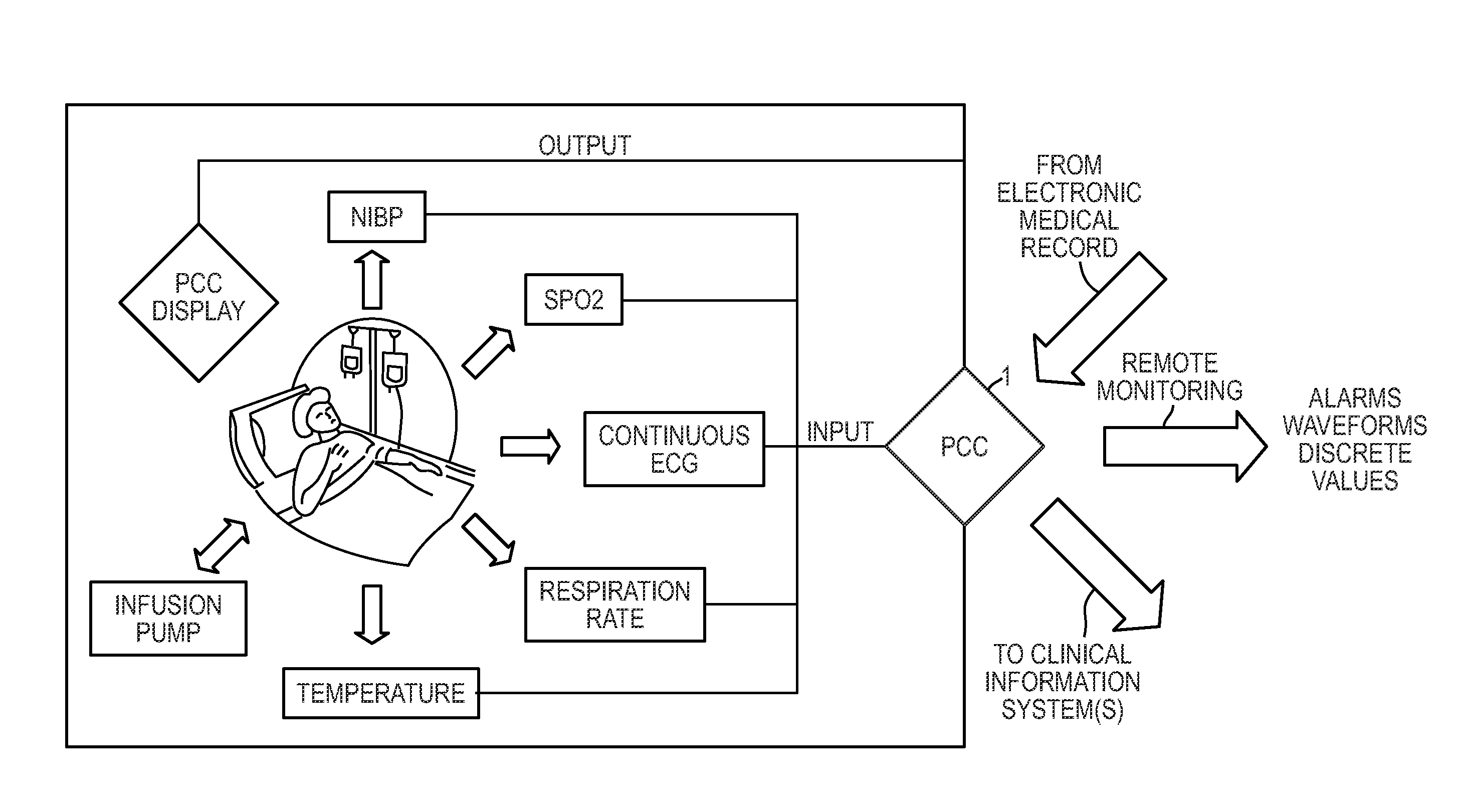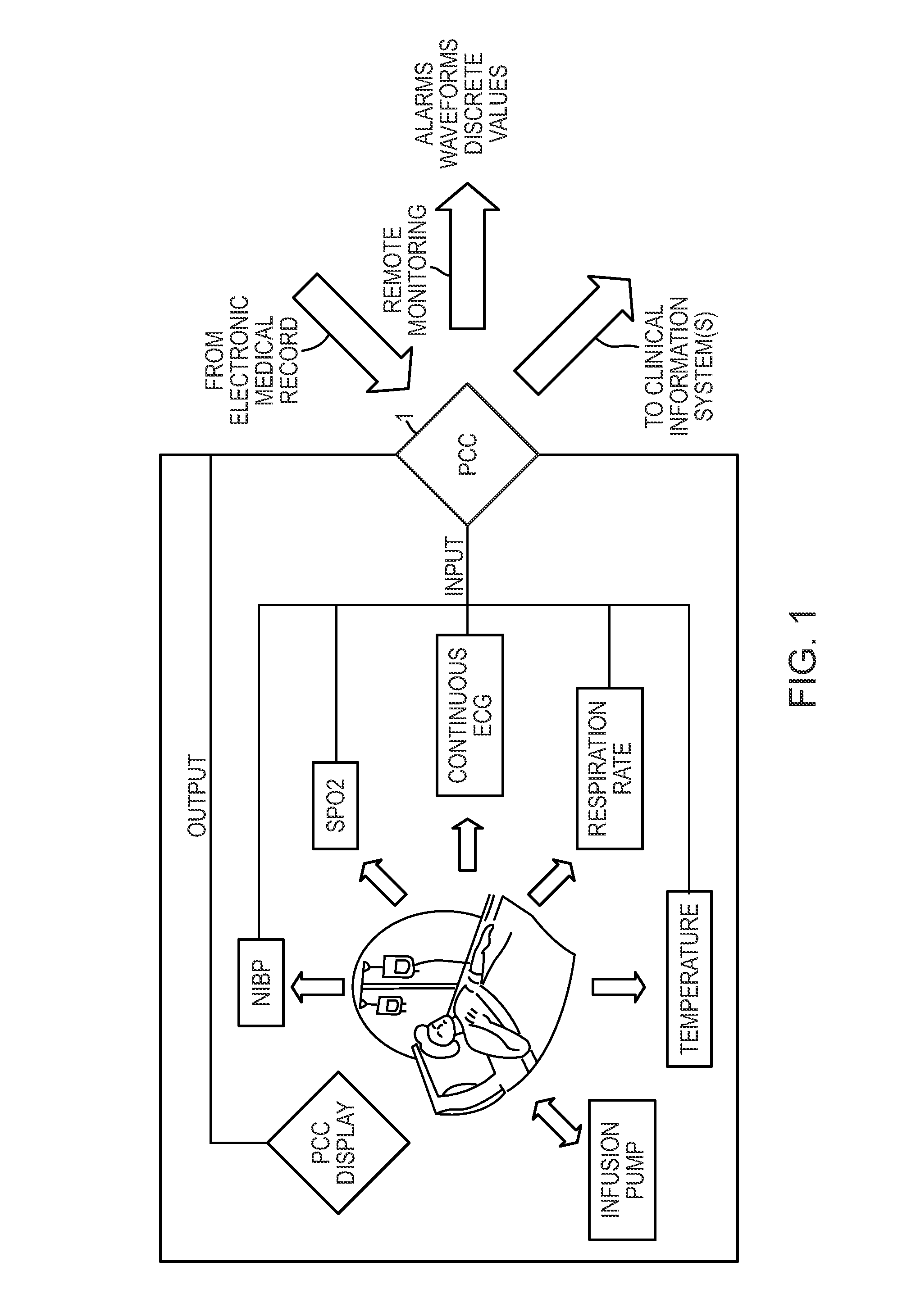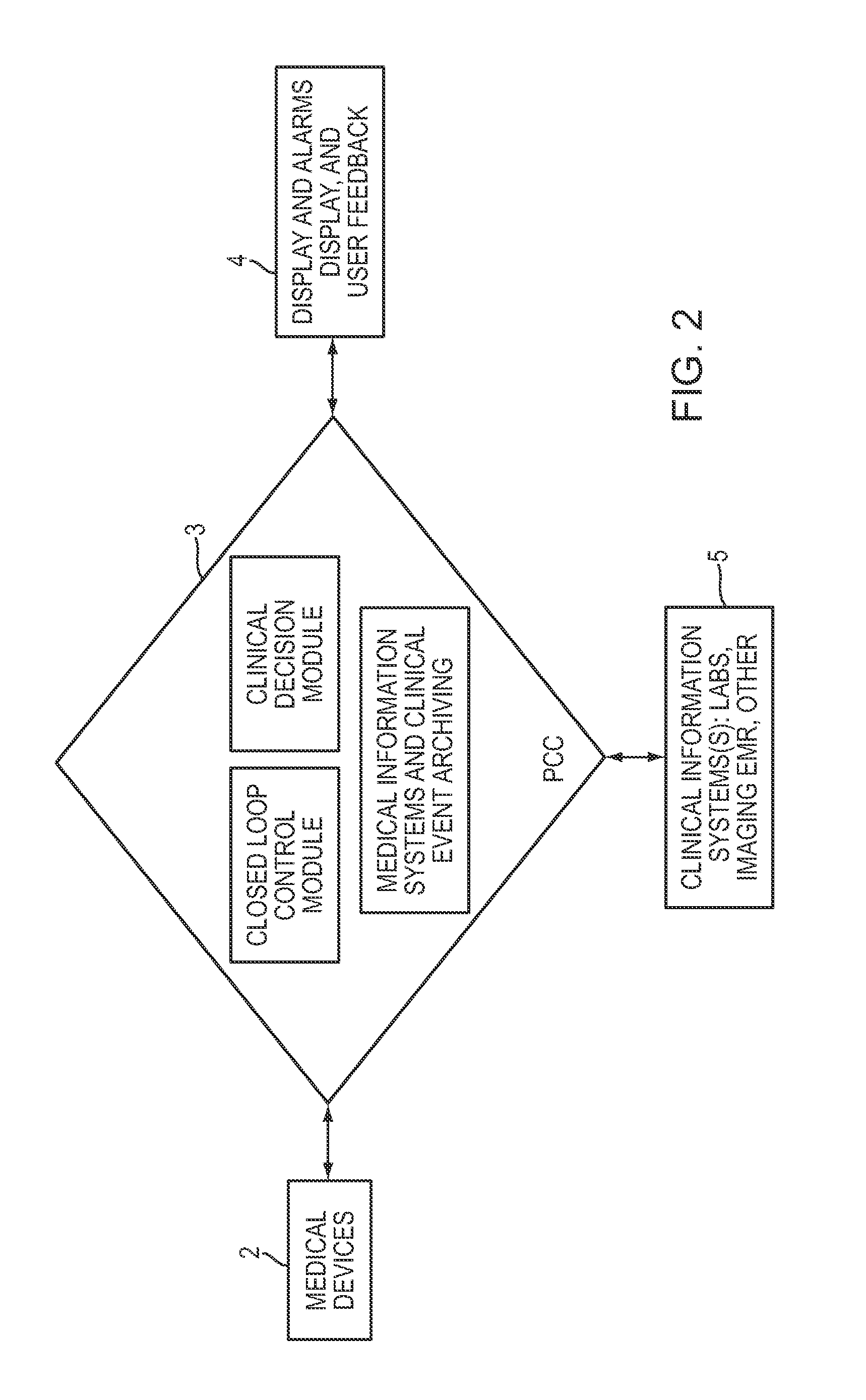System and method for patient care
a patient care and system technology, applied in the field of system and method for patient care, to achieve the effect of convenient interpretation
- Summary
- Abstract
- Description
- Claims
- Application Information
AI Technical Summary
Benefits of technology
Problems solved by technology
Method used
Image
Examples
example 1
[0035]A demonstrative example of an algorithm used in the system involves an infusion pump, SPO2 and periodic NIBP taken every 30 minutes prior to drug injection. A patient's noninvasive blood pressure (NIBPB) and pulse oxide (SPO2B) are taken at the time that IV is started. As measurements, the pulse may be compared against the previous 100 values, average and each individual pulse oximetry as well as against the baseline. The baseline changes as more and more pulse oximetry values are found. If the pulse oximetry value drops below SPO2min, or
if SPO2i minTHEN,IVrate PAUSEDALARM ON HIGHTRANSMIT last NIBP + Alarm + Drug Dosage / Rate + SPO2i + Potential ProblemDISPLAY, Average and Trend NIBP, Events, Infusion Module, Trend of SPO2IF SPO2i varies more than X % (normally a large amount) AND NIBPi i > XTHEN,IVrate PAUSE X secondsALARM ON HIGHTRANSMIT last NIBP + Alarm + Drug Dosage / Rate + SPO2i + Potential ProblemDISPLAY Average and Trend NIBP, Events, Infusion Module, Trend of SPO2IF SPO...
example 2
[0036]Another demonstrative example involves a patient who goes into the emergency department complaining of chest pains. A diagnostic ECG is taken, but appears normal. The patient is showing signs of discomfort therefore she is held for observation. The patient is hooked up to a continuous 5 lead ECG. The system collects 10 to 15 seconds of continuous ECG data every 2 minutes and compares it to the original ECG taken upon triage in the ER. The algorithm utilized to determine if there is a potential decline in the patient's health is:
IF ECGi+1± X % ≠ ECGi ± X %DIAGNOSTIC ALGORITHM: ONSEVERITY RANKED = sIf s = not severeALARM MediumIf s = severeALARM LowDISPLAY: ECGi, ECGi+1, measurement changesTRANSMIT: ECGi, ECGi+1, measurement changes
[0037]This data may then be sent to the MIS / CEA module with an event timeline 20, 21.
[0038]Referring to FIG. 5, a closed loop control module allows for information of one device to monitor or control the activity of another. For example, this may invo...
PUM
 Login to View More
Login to View More Abstract
Description
Claims
Application Information
 Login to View More
Login to View More - R&D
- Intellectual Property
- Life Sciences
- Materials
- Tech Scout
- Unparalleled Data Quality
- Higher Quality Content
- 60% Fewer Hallucinations
Browse by: Latest US Patents, China's latest patents, Technical Efficacy Thesaurus, Application Domain, Technology Topic, Popular Technical Reports.
© 2025 PatSnap. All rights reserved.Legal|Privacy policy|Modern Slavery Act Transparency Statement|Sitemap|About US| Contact US: help@patsnap.com



